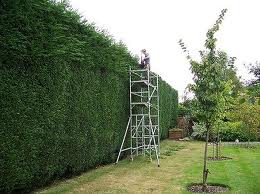Jiny Blom, a well known landscape designer said “Take risks. If someone tells you something is impossible, see if you can do it. Gardening is a knife edge between disaster and serendipity.”
I felt she was talking directly to me when I built this stone path.
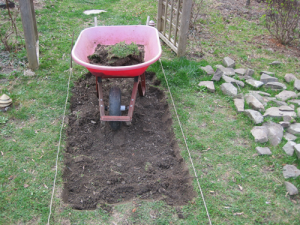
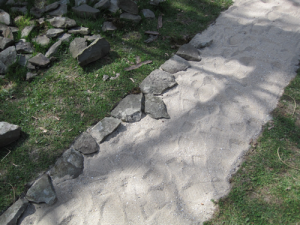
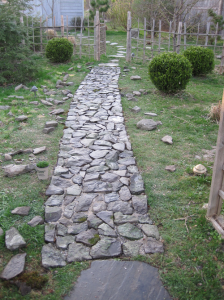
I collected the rocks from an old stone wall on my mother’s property. I dug a trench 8 inches deep and filled it with 800 pounds of rock dust and sand, then pieced the stones together like a quilt or jigsaw puzzle.
Rikyu, the brilliant tea master of the 16th century, said that the design of the Roji should be sixty percent practical and forty percent aesthetic. This path meets his criteria.
I’ve planted creeping thyme in the spaces between the stones. I wasn’t sure it would like the conditions: was there enough light, was the soil too sandy, did it drain well enough…? It’s taken a couple of years but slowly the thyme is making itself at home.
The path needs periodic weeding. I get down on my hands and knees, my nose inches from the stones and delicatly separate the weeds from the thyme. It’s a garden job that could easily be forgotten or put aside as too much trouble, but in the late afternoon when the light is gentle and the air soft, to get down on the ground inches from the earth is a task I’m grateful for.
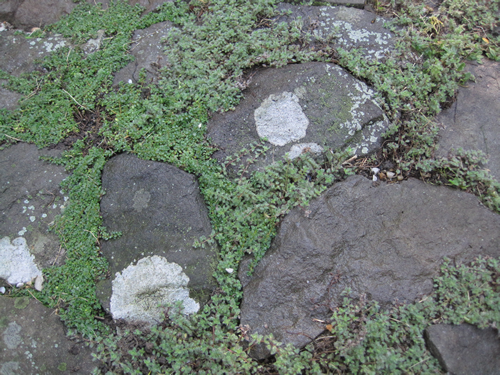
– excerpt from A Tea Garden in Tivoli
Hedges and fences form the bones of a garden and create rooms with distinct styles. What starts out as a blank slate now has a frame that can be filled. One of the first things I did in my garden was to plant thirty feet of privet along my property line to enclose the flower garden and give me a sense of a “secret garden”, a walled place set apart from my neighbors.
The most magnificent privet I”ve ever seen are grown in the Hampton”s of New York and used everywhere. Here”s a typical, perfectly manicured hedge that screens a house.
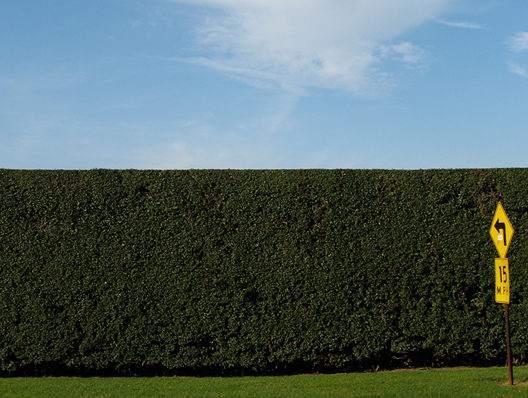
This hedge must be at least twenty feet high – if not more.
“How do they get that tall and so beautifully sculpted?”
That”s been my question ever since I planted my little, two foot high shrubs ten years ago. Well, it turns out that here in the Hudson Valley it”s not so easy. There”s not enough sun, or there”s not enough “something” to make the Privet take off like they do in Long Island.
Pruning is difficult. Most people will get their electric pruners out and just top the growth, which creates more density, but in our case that would mean keeping the privet to about three feet tall; we wanted them much higher! Over the years I”ve hand pruned the hedge making sure that the top is thinner than the bottom like the diagram on the right. It needs to have the shape of a modified pyramid.
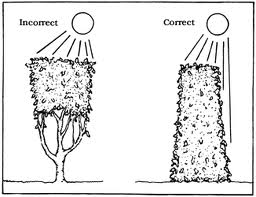 I”ve also hand clipped long straggly stems in the middle of the hedge that don”t have growth on the center and only leaf out on top where there”s enough light. It”s tricky. The more you prune, the bushier the growth as you can see from the diagram on the far left , but you loose that undergrowth that makes such a perfect hedge.
I”ve also hand clipped long straggly stems in the middle of the hedge that don”t have growth on the center and only leaf out on top where there”s enough light. It”s tricky. The more you prune, the bushier the growth as you can see from the diagram on the far left , but you loose that undergrowth that makes such a perfect hedge.
But finally after ten years, my Privet has taken off and responded to my selective pruning. Now my problem is how to get to the top branches. I get on a ladder and have a long hand clipper, but it”s an arduous task and I can”t reach the top. I”m not complaining though! I”m thrilled they”re so high.
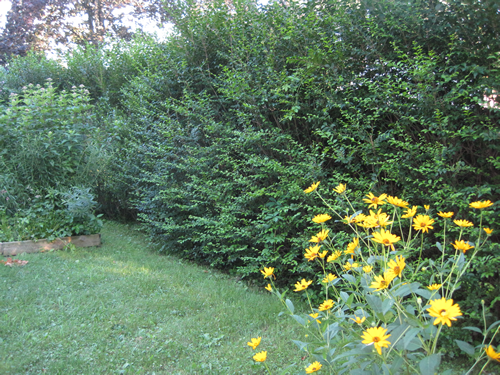
My Privet hedge has gotten so tall I can”t prune the tops. But this
is a wonderful year for this hedge. It”s finally come into it”s own!
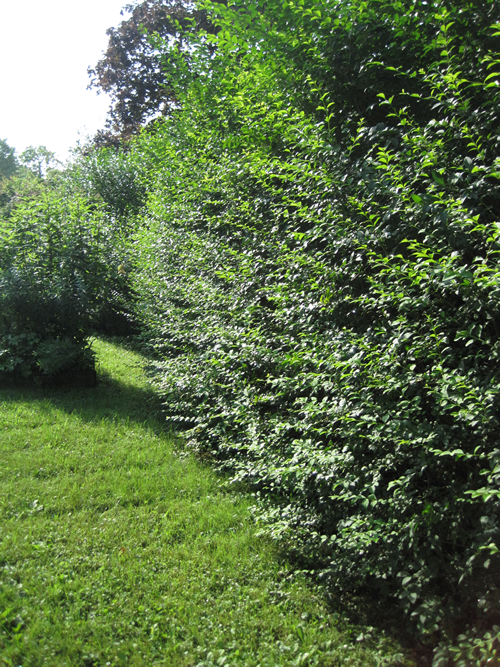
Not as manicured as the Hampton”s hedges, not as perfect, but I”m thrlled.
So now I have to figure out how to get to the top. I asked my neighbor who has a lawn business to help out, but we”re not in the Hamptons. She has two guys on a ladder, who “might” be able to reach. Take a look at what the pros do…Yikes!
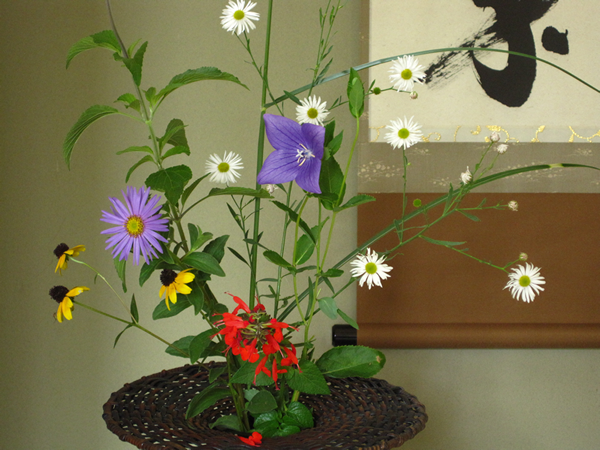
The Tea Ceremony as we know it today was created in 16th century Japan by the Tea master Rikyu. The flowers in the tea room are placed according to his insight and reveal an aesthetic of simple restraint. He said “To arrange flowers is to express the life of flowers.”
Each flower is enjoyed for its distinct color, shape, size and seasonal bloom. Equally appreciated are the vases that hold the flowers. They”re varied: rough pottery for use in winter, baskets in all shapes and sizes for summer, smooth bronze and blue and white porcelain for formal occasions. The flowers and vases have stories to tell, and in the tea room they are talked about and admired.
excerpt – A Tea Garden in Tivoli










